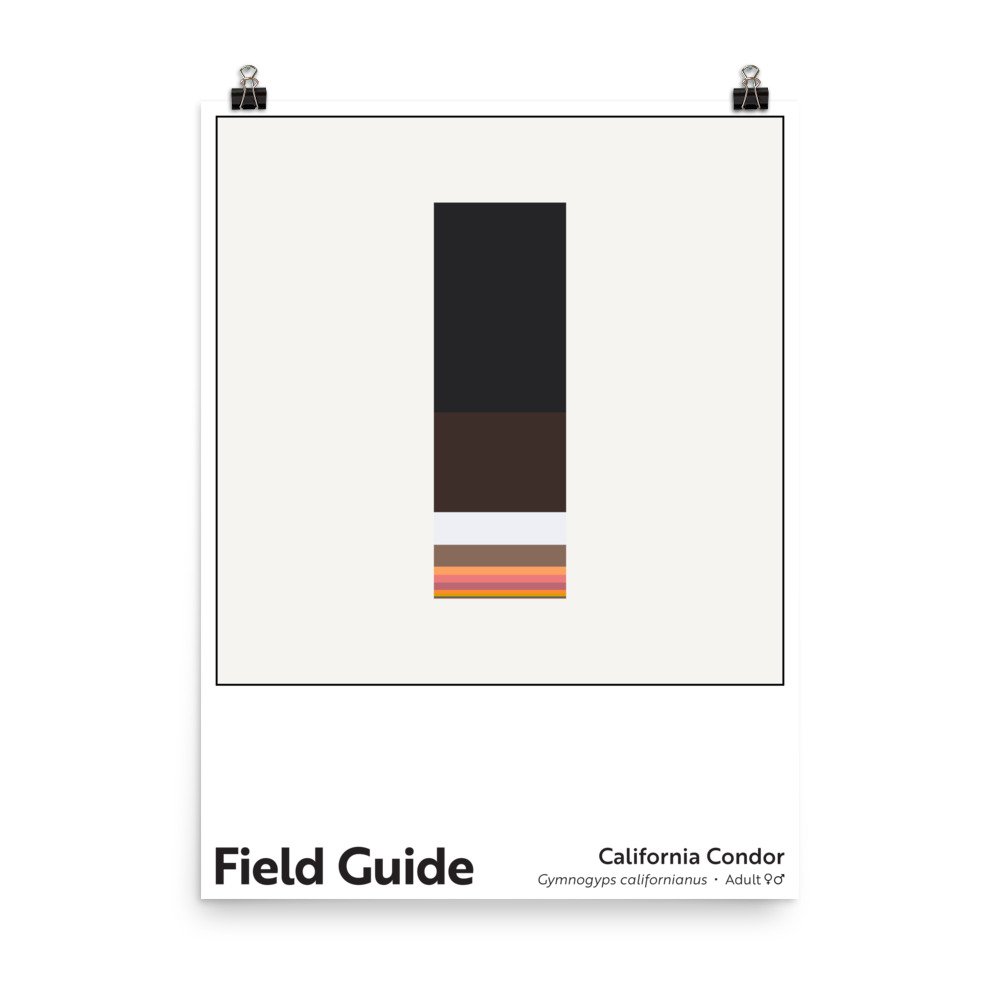Field Guide : California Condor
Field Guide : California Condor
Unlimited edition. 18 x 24 inch, museum-quality poster on matte paper.
The California condor is an iconic species, but it’s one most of us have never seen in person. North America’s largest bird once thrived from British Columbia to northern Mexico, but it was extinct in the wild by 1987.
When I hear the word “condor,” my first association is actually a 1982 BBC nature documentary about the wildlife of the Andes Mountains. Flight of the Condor includes inedible scenes of Andean condors, a South American relative, soaring over rugged, snow-capped peaks, set to a regionally-inspired, panpipe-heavy soundtrack. When I think of California condors, in particular, that same music comes to mind, anatopic though it may be as I imagine our great vultures flying high over Big Sur or the Lost Coast.
Thanks to a remarkable captive breeding and reintroduction program involving federal and state agencies, zoos, tribes, nonprofit organizations, and a great many biologists and volunteers, my California condor flight of fancy is becoming more real…just without the panpipes. Our largest vultures are making a gradual comeback. One exciting example of this effort is currently occurring several hours (by car) north of me, where the Yurok Tribe is bringing condors home to another region of their historic range, one from which they’ve been absent since 1892. The Yurok people want to bring condors back not only for the good of the species, but as part of their larger effort to restore the ecosystems and revitalize the cultural landscape of their ancestral homelands. On California’s Central Coast, another, longer-running reintroduction project by the Ventana Wildlife Society has successfully established wild populations. In an essay I wrote a decade ago, I described vultures as “dark, bald sentinels of the sky, who visit earth to feed on carrion and carry the reconstituted energy skyward again.” In that sense, these birds are symbols of rebirth, converters of death into life. Our current efforts to reintroduce and reestablish condors is itself a special kind of rebirth.
Note: These archival poster prints feature rich, appealing colors. I encourage customers to take care in handling them until they are framed/protected for display; the darker colors on the matte paper can be scratched. They ship rolled, so customers need to flatten them before framing (or have their framer do so).
Charitable Sales Model: Whenever one of these poster prints is purchased, a charitable contribution equal to 10% of the print’s cost (or $3.60) is made to a nonprofit working to tackle environmental or social challenges. Read more about my charitable sales model here.

